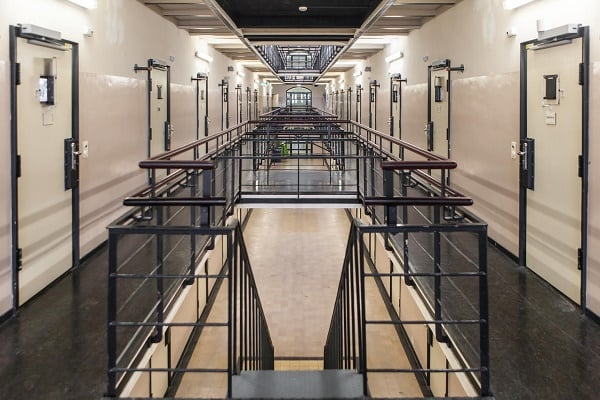
Image: via Hacking Habitat
Holly Herndon and Metahaven, Home (2014), video still.
Image: Courtesy of the artists.
Every time we click “agree” to another set of terms and conditions, we strengthen the digital Panopticon in which we live; constantly and willingly placing ourselves under surveillance with every new account we create. Some people, like the team behind an upcoming exhibition housed inside a former penitentiary in the Netherlands, might say we are prisoners of our smartphones, tablets, and laptops.
The show, called “Hacking Habitat: Art of Control,” aims to show viewers how “high-tech systems are taking increasing control of our lives,” and will do so by bringing together works by 86 artists—from Joseph Beuys and William Kentridge to Metahaven and Mediengruppe Bitnik—whose works deal with subjects like advertising, mass surveillance, Wikileaks, and the dark web. All this will be housed, fittingly but chillingly, in Wolvenplein, a cruciform-plan building in the center of Utrecht, built as a solitary confinement prison in 1856.
The inside of the Wolvenplein Prison in 2015.
Image: via Hacking Habitat
Wolvenplein, which translates from Dutch to “Wolf Square”, was a functional prison in the center of the city until 2014. During World War II, the Germans took it over and jailed those who were found in possession of banned media. From the 1950s until its closure it was used as a house of detention, no longer employing practices of solitary confinement. Declared a national monument in 2000, Wolvenplein closed in 2014 thanks to falling crime rates and budget cuts.
Wolvenheim Prison.
Image: Erik Honig via Wikimedia Commons.
Stanza, Nemesis Machine – From Metropolis to Ecumenopolis (2015).
Image: Courtesy of the artist.
“Hacking Habitat” isn’t the first time the empty building has opened its doors to art. In 2015, Utrecht Down Under exhibited the works of 41 contemporary artists from the city, with the theme “Control.” Surrounded by water on three sides and filled with tiny individual prison cells, Wolvenplein seems to be the perfect setting for artworks dealing with themes of control and surveillance. The dystopian future is here, and it’s making for some really interesting art.